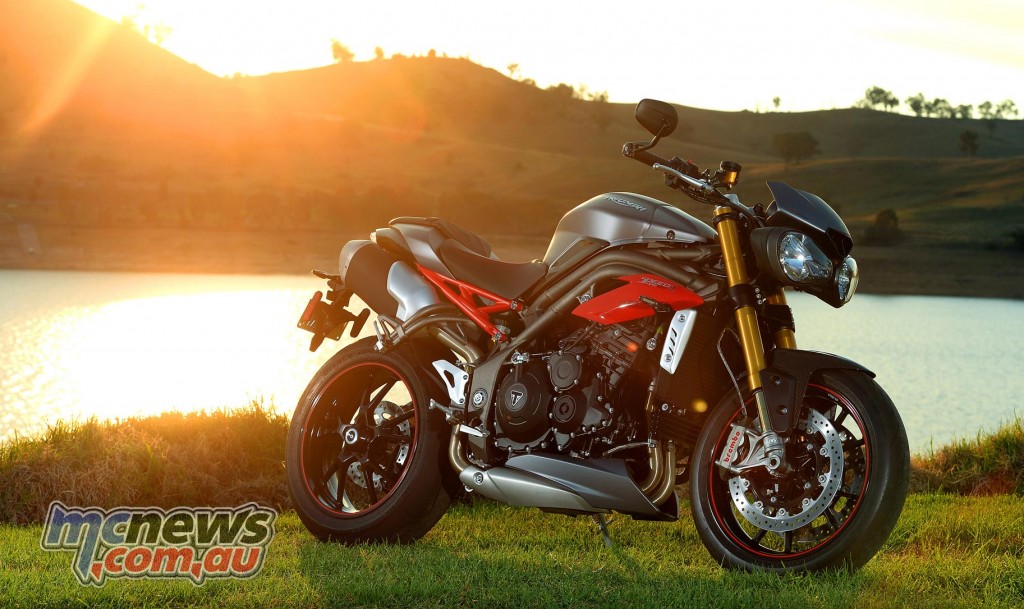Triumph Speed Triple and Speed Triple R (2016)
Motorcycle Review by Trevor Hedge – Images by Jeff Crow
Introduced in 1994, Triumph’s Speed Triple was a motorcycle that really reinvigorated the Triumph brand. The original new-era Speed Triple was a bold, muscular and delightfully brutish machine. It steered rather slowly, was physical to ride and stood out from the crowd like a beacon of English promise. It was distinct and it was different, and it won plenty of dark hearts.
That first generation Speed Triple was also instrumental in disproving the maxim that British motorcycles leaked oil and rarely worked properly. It proved to be bulletproof, and along with the reinvented Bonneville range, has effectively built the backbone of the new Triumph legacy.
Fast forward more than two decades (Yes, it has been that long), and Triumph has just introduced its sixth generation Speed Triple. With modern heritage, strong branding and a wild-eyed following, the new iteration has been keenly anticipated by the motorcycle public. Word is the design and development team were given orders from Triumph CEO, Mr Nick Bloor himself. “Don’t fuck this up!” he’d said.
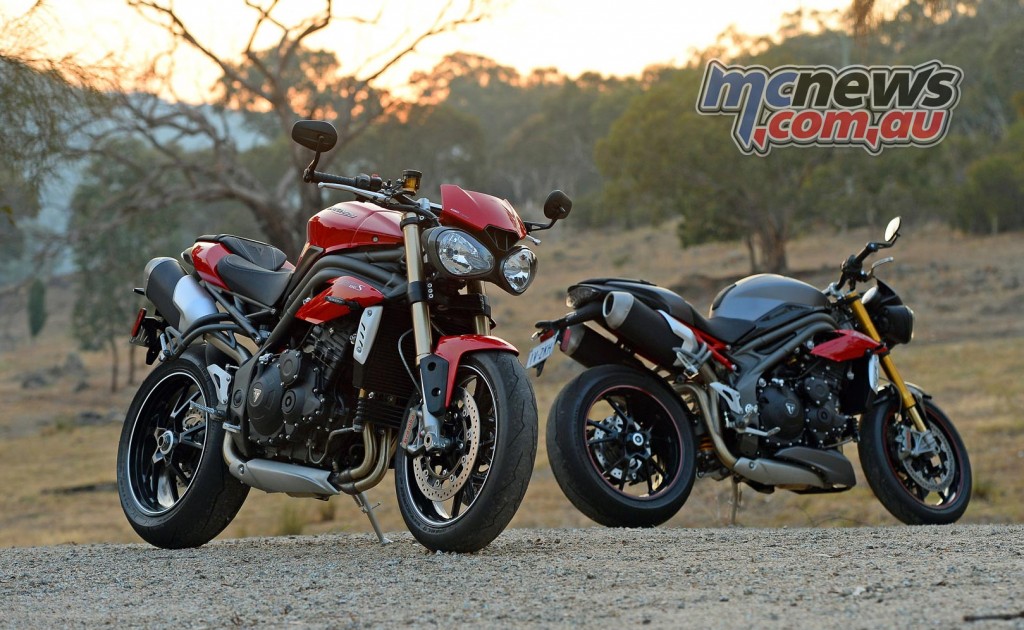
Part of Mr Bloor’s completely succinct instruction meant taking the machine in a somewhat new direction. The result is a Speed Triple that is incredibly user-friendly. From its smooth fuelling, through to its new 675 Daytona-derived gearbox and lightened engine internals, this Speed Triple is a vast technical improvement on its predecessors.
Add excellent switchable traction control and ABS systems into the recipe and this is a Speed Triple that anyone, from pale-faced novice to weather-worn grey-beard can ride, enjoy and truly savour.
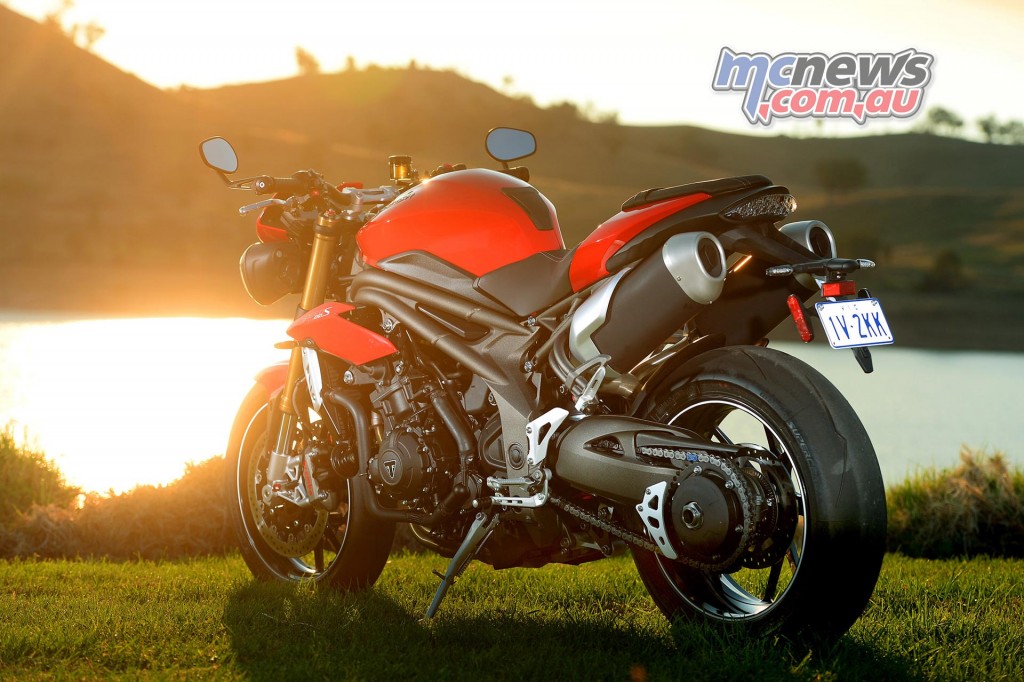
In fact, it is now so refined and easy to handle I feel some old school Speed Triple fans might long for the somewhat gruffly charismatic earlier generation machines.
The gravelly triple-cylinder snarl is still there, and would be further liberated by an aftermarket Arrow muffler, which Triumph can offer you, complete with ADR compliance to keep the po-po off your back. However, even with the 1050cc mill singing its open-piped triple-chord threnody, I still reckon some Speed Triple diehards might miss the more agricultural nuances of the earlier machines. While newcomers to the world of Speed Triple, that favour practicality and perfect manners, will revel in the simple functional utility of this latest generation machine.
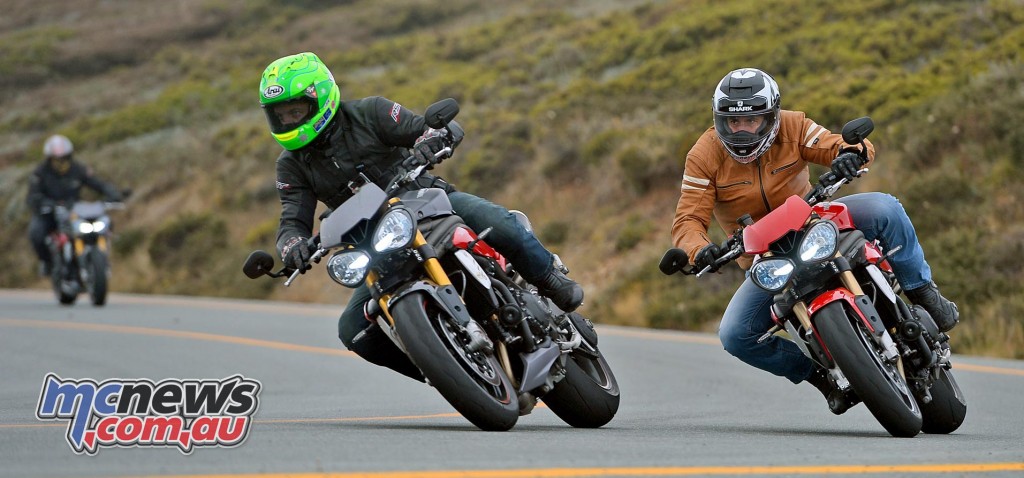
What does a more enlightened fella like myself think? The new Speed Triple is a better beast in every single way, but to be honest, I reckon Triumph should have left more crank weight in its belly to give it a slightly heavier beat. Keeping that little bit of bastard in the crankcases would have added a little more primal spice to each ride.
Triumph won’t like reading that, but there are plenty of motorcycle sites out there that supply sycophantic drivel masquerading as motorcycle reviews. We don’t do that here.
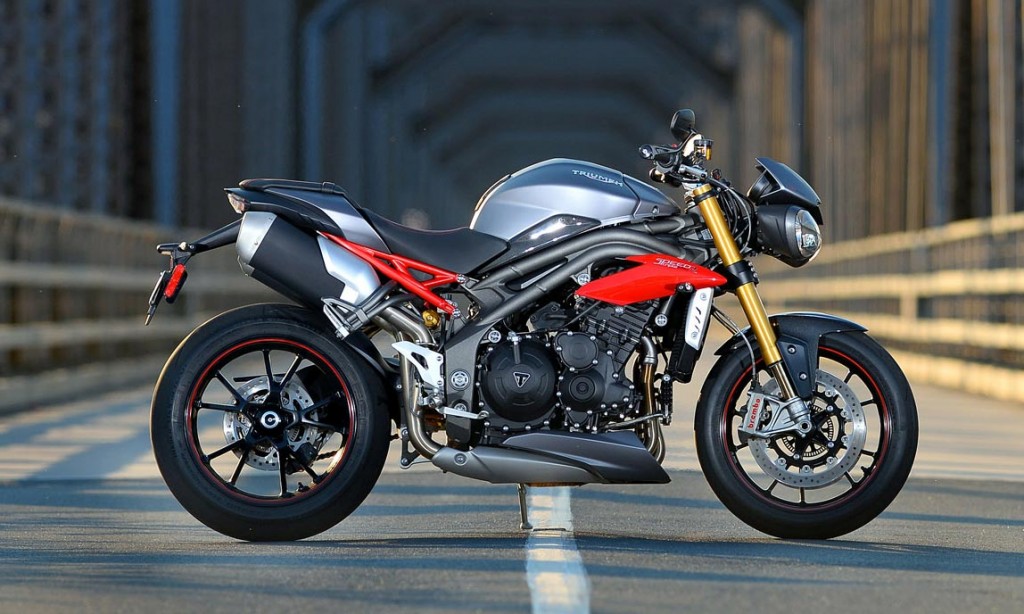
The thoroughly revamped engine spins up quickly and smoothly. A strong and very smooth bottom-end rapidly climbs straight into a wide expanse of mid-range that then plateaus smoothly into a decent top-end before a 10,000rpm limiter stops proceedings.
Triumph lists 104 engine changes to this latest generation machine, including new pistons, crankshaft, combustion chambers and ports, headers and airbox. It’s clearly the most refined and well-engineered big-bore triple it’s ever made.
The factory could have easily given the bike more high-rpm horsepower, but its new mantra is ‘For the ride’, which focuses on the big picture rider experience. Bloor’s boys were not chasing outright power numbers, so the Speed Triple’s 2016 engine is no ridiculously brutal KTM 1290, or superbike-like BMW S1000 R powerplant.
It’s still pretty bloody good though, just different. So if you are chasing top-end thrills look elsewhere. But if you enjoy minimum use of the shifter and smooth grunt from idle through to around 9000rpm, and are not the type who gets his jollies revving the tits off his bike, then the Speed Triple may indeed be the mount you’ve been waiting for.
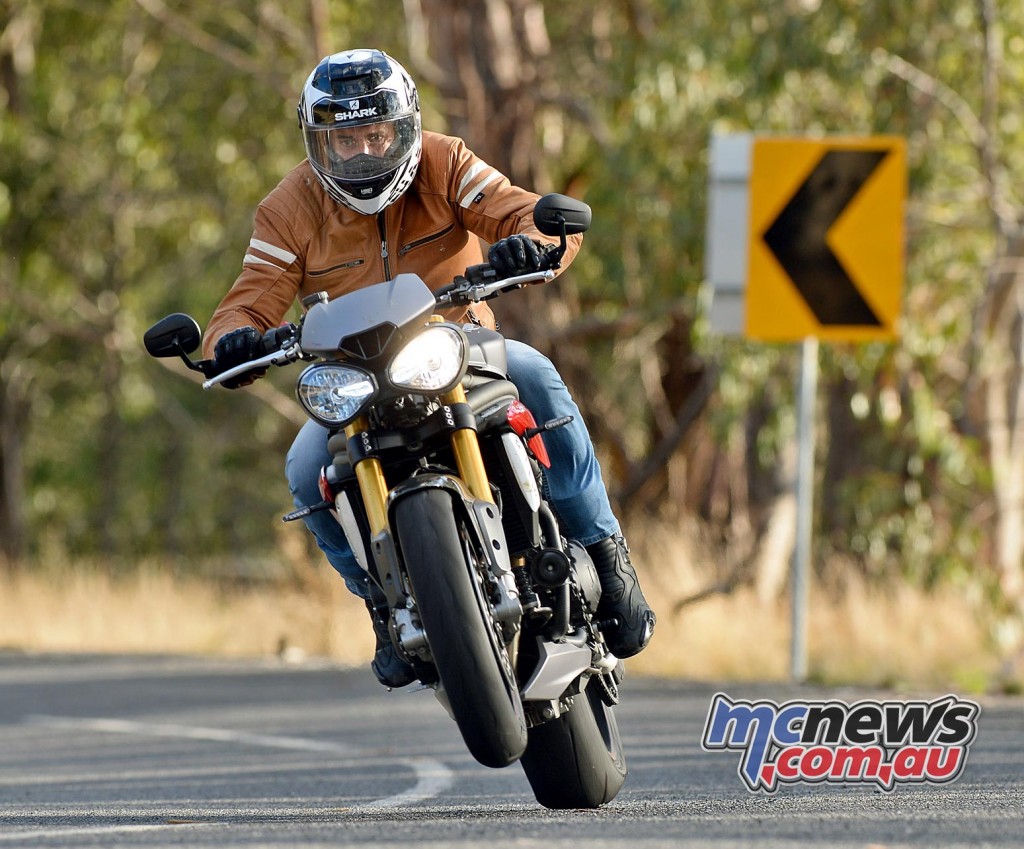
The power delivery is extremely linear. Its peak of 138hp arrives at 9500rpm, and the torque-spread is much fatter everywhere in the rev range than that of its 2015 predecessor, with its peak twist of 112Nm arriving at 7850rpm. From 4000rpm to 7000rpm it bests the previous Speed Triple by a very handy margin.
These figures do surprise me a touch. Both claimed peaks are achieved at higher rpms than what my bum dyno felt from the saddle. I think my misconception was initiated by the very useable nature of the engine, which is obviously designed to be as linear as the engineers could achieve. This means that, from the saddle, the Speed Triple does not feel like a 140hp motorcycle. But it very much is.
Clutch take-up from a standstill is spot on and that makes the Speed Triple a great city commuter. Short shift to third and you could just about leave it there in the confines of heavy traffic until you needed to come to a stop. The gearbox is flawless, and the engine braking is extremely well controlled thanks to the excellent mapping and a slip-assist clutch.
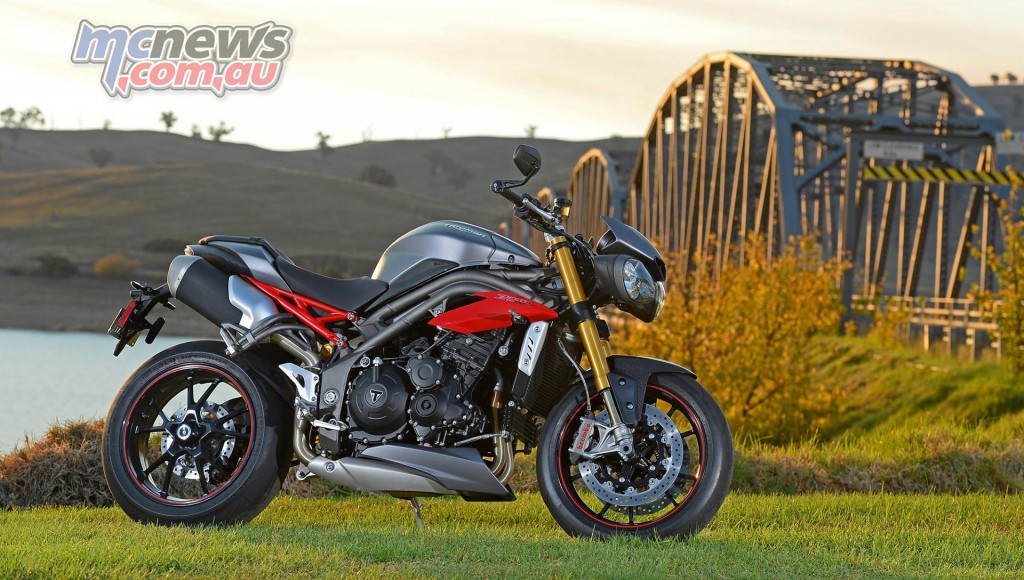
Out on the highway and the Speed Triple acquits itself remarkably well. That small bikini fairing atop the instrument binnacle actually seems to do something. Even at Go To Jail speeds the airflow was smooth over my Shark helmet and there was no real buffeting to put me off my game.
Triumph has done a great job mapping the ride-by-wire throttle and ABS/TC systems. Tyre pressure monitoring (TPMS) is also available on the Speed Triple as a $350 option. The TPMS is integrated into the instrument cluster along with the standard digital speedo, programmable shift lights, lap timer, clock, fuel gauge and trip computer.
There are five modes available, all of which serve a useful purpose but a particular highlight for me was the Track mode. Track mode allowed plenty of scope to play silly buggers with the front or back wheel in the air without the computer pulling the pin on the fun. It still allowed the ABS and traction control systems to be there in the background, should things suddenly go unexpectedly pear-shaped across a patch of diesel or a bad road surface.
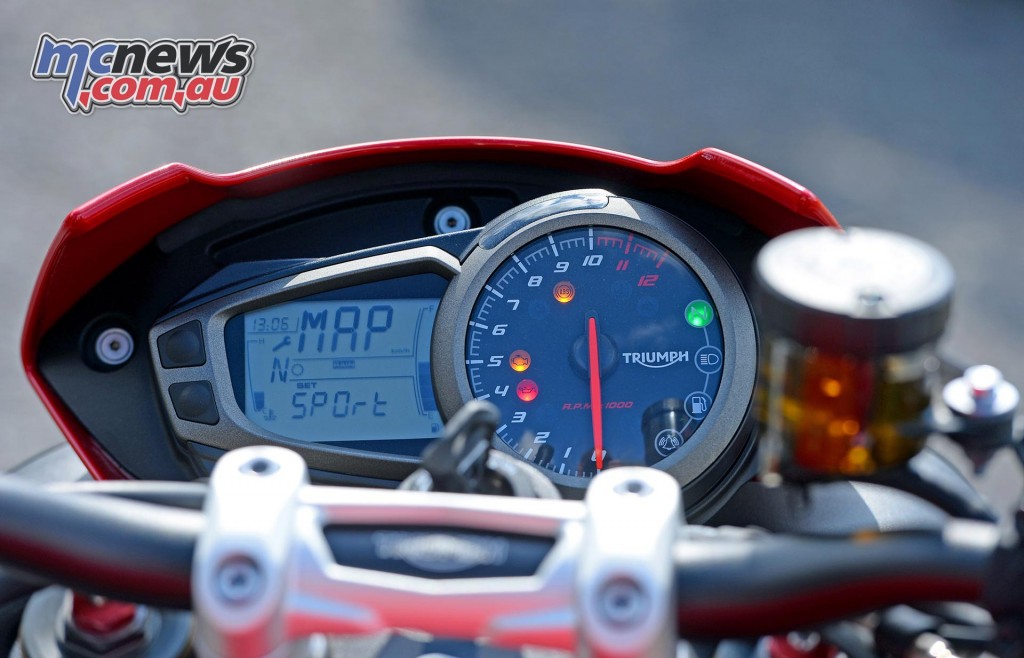
I love this approach to electronic rider assistance. It means a rider does not have to turn off all the computerised safety services to have some fun. Changing through the modes can also be done on the fly. A smart system, smartly implemented. Kudos.
The seat was comfortable across my two fairly big days stropping across the stunning high country that straddles the NSW/VIC border. There would certainly be no physical issues using the full range of the 15.5 litre fuel tank. How far that range would be is entirely dependent on how eagerly you twist the throttle. But a rule-of-thumb guide would get you at least 200km in full-fang mode, while 250km would be a realistic touring range on the highway.
The ergonomics felt natural and the bar-end mirrors worked well and remained where they should be no matter what the speed. This is clearly the most comfortable Speed Triple to exit the Hinckley factory, and yes, the Speed Triple is still put together in Great Britain.
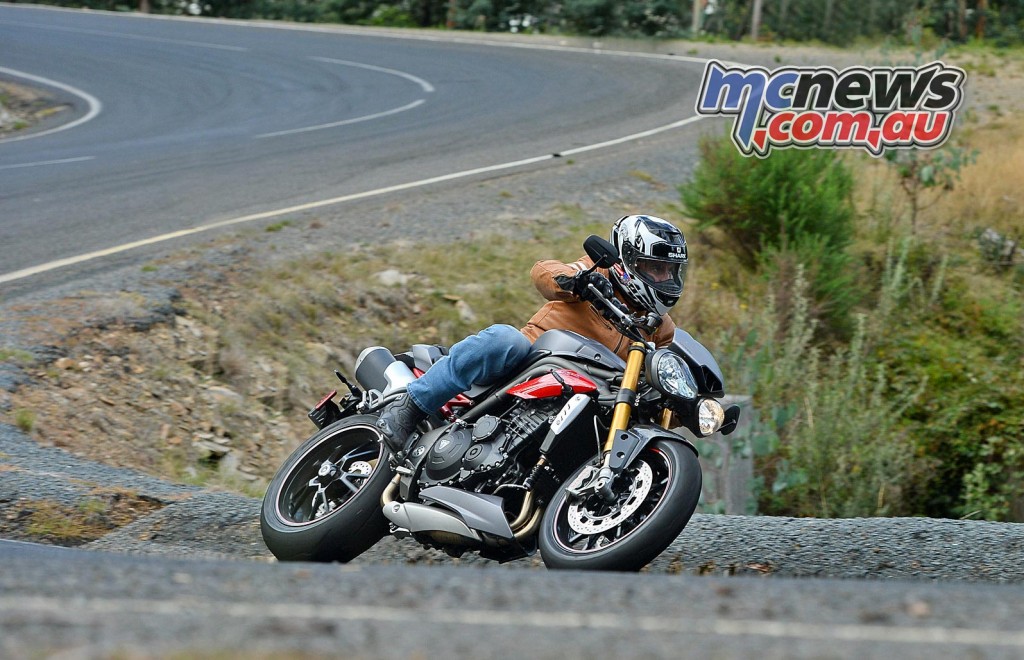
You also have a choice, because there are two variants of the Speed Triple, the S and the R. Predictably the R gets a fair bit more bling, but the highlight is the Öhlins suspension.
The S model was a little soft for my liking, but bear in mind the pace was pretty hot. I had to preload the rear brake before applying the front to help reduce the dive when calling upon those very strong 320mm Brembo M4.34 mono-bloc stoppers. Their initial bite is quite robust and braking power increases quickly throughout the pull of the lever. And while I liked this a lot, I feel it taxes the suspenders on the S model a little too much. Certainly, a more sympathetic riding style can be adopted to counteract the forces on the suspension brought about by a more aggressive riding habit.
Don’t get me wrong. The S doesn’t wallow or bob about like a cork in the ocean. It is entirely well-damped and predictable. I just found it too softly sprung for my liking. Most of the other testers did not share my complaint, but I can only report my own findings. The Showa suspension on the S is fully adjustable, so I tried maxing out the preload and also experimented with the compression damping, but I could never get completely happy with it. Reducing the air gap in the forks would have helped, but to be truly comfortable when having a crack I would be fitting stiffer springs front and rear. But that’s me. It is highly likely you will be completely happy with it as it comes from the factory.
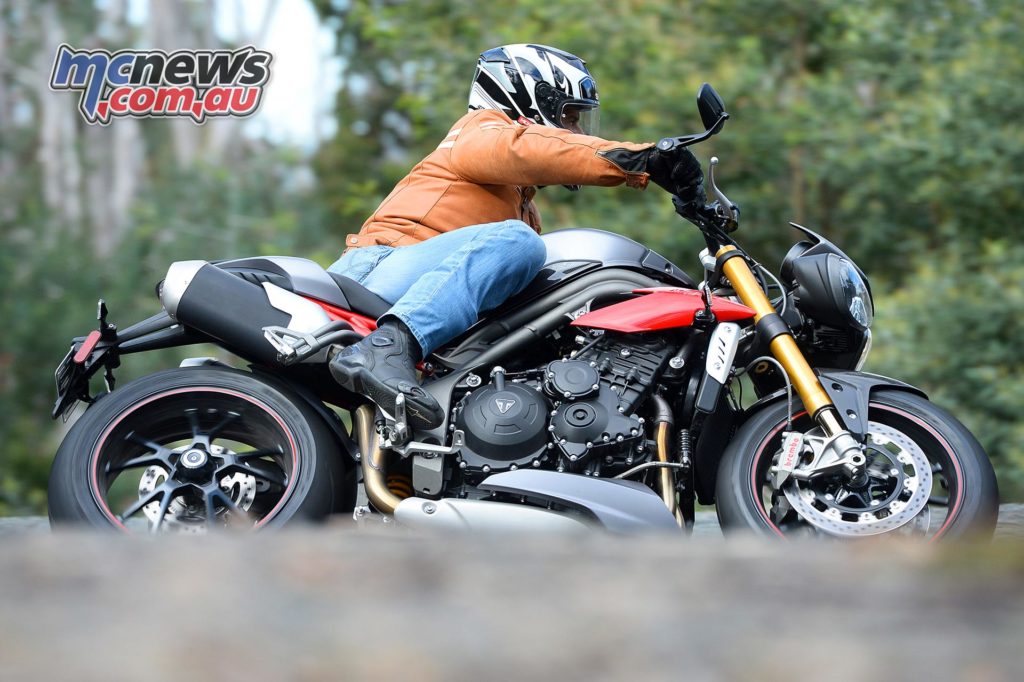
Switching to the R made me much more comfortable. The Öhlins kit is nicely damped and sprung for my 87kg mass; providing both compliance and sporting ability. On the road I doubt the R will prove noticeably quicker due to the better suspenders. The limiting factor on the road is always going to be how much risk you want to take when pushing towards that outer edge. But the stiffer set-up did make a world of difference to how much I enjoyed the R version. Entering corners hard was just so much more confidence-inspiring with the Öhlins doing their things at either end of the bike.
The geometry on both versions is the same. They both weigh 192kg dry, have the same suspension travel at both ends, and both machines roll on excellent Pirelli Super Corsa rubber, but the R is a much more rewarding ride.

The R also gets a smattering of carbon fibre and other goodies, but I care not for the bling. I care for the Swedish suspension and would not think twice about shelling out the extra $2400 over the S model to get the Öhlins NIX30 forks and TTX36 shock. Then there’s the fact the R model will undoubtedly retain better resale value. Triumph have priced the S model at $17,950 plus on roads while the R commands a $20,350 sticker price.
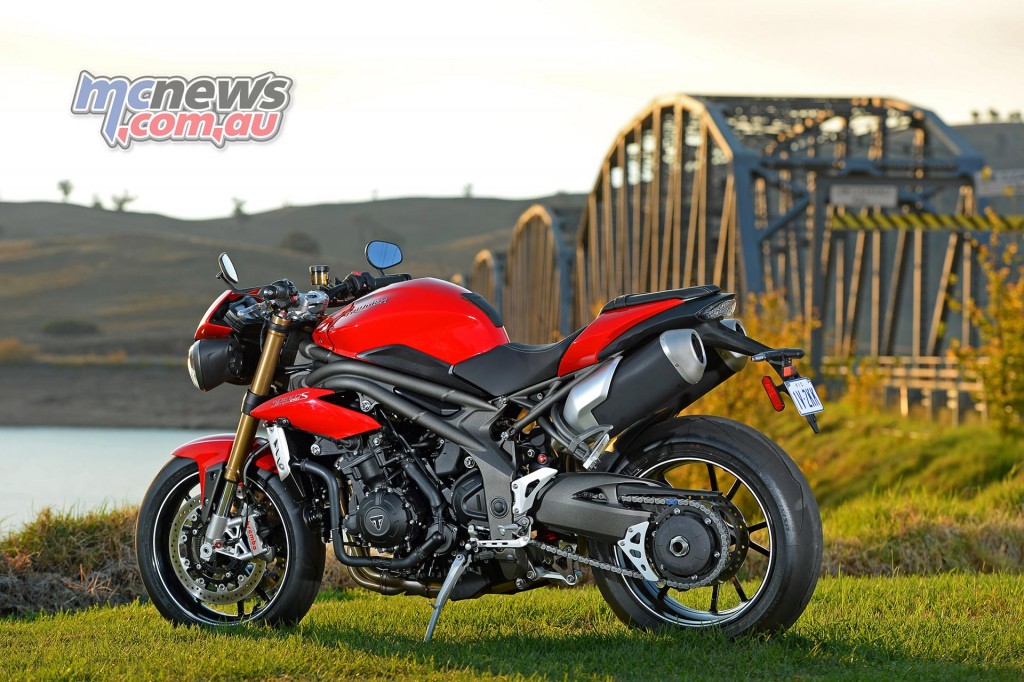
The 2016 Speed Triple has taken the British brand to a new high. It’s a bike with true all-round ability, backed by some fine engineering prowess and enhanced by an excellent integration of electronic rider aids.
For a minimalist naked, it offers great comfort levels at all speeds. The smooth, tractable grunt it churned out was just great, and to be honest, the Speed Triple clearly surpassed my expectations for big-day-in-the-saddle practicality. Marry that to its unique three-cylinder charisma and the 2016 Speed Triple is a hugely attractive package.
[youtube id=”_3sXJY_Zlow” width=”560″ height=”315″]
Triumph Speed Triple and Speed Triple R (2016) Technical Specifications
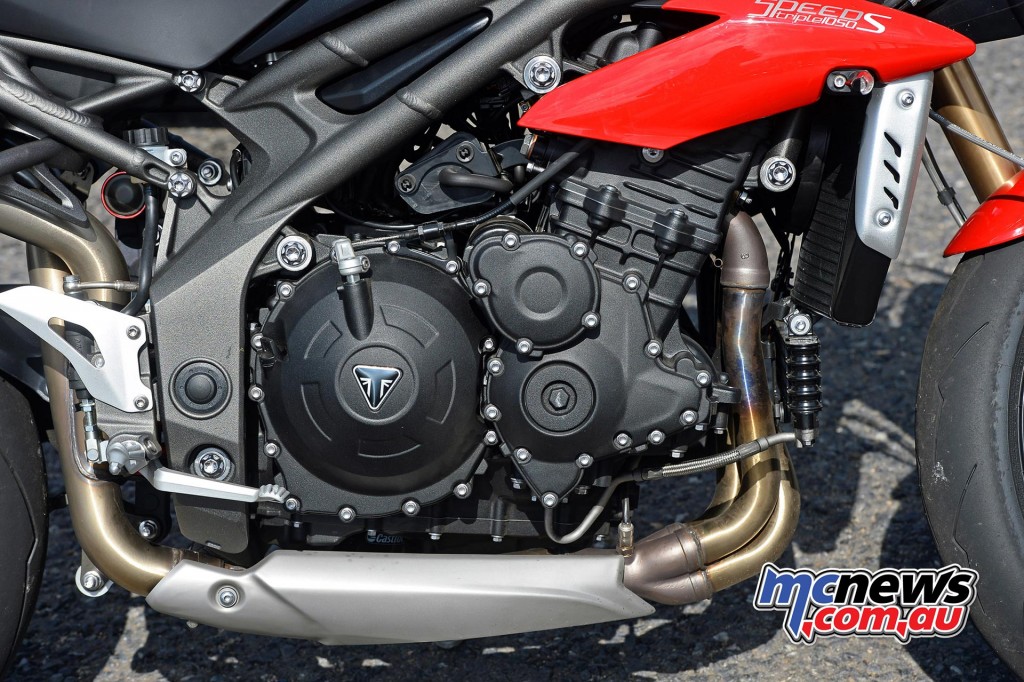
- Engine -1050cc, liquid cooled, 12-valve, DOHC, in-line three-cylinder
- Bore x Stroke – 79×71.4mm
- Compression Ratio – 12.12:1
- Maximum Power – 138hp at 9500rpm
- Maximum Torque – 112Nm at 7850rpm
- Induction – Multipoint sequential EFI
- Transmission – Six-speed, wet slipper clutch, chain drive
- Safety Aids – Traction control, ABS, slipper clutch. Five riding modes.
- Frame – Aluminium Twin Spar
- Swingarm – Single sided alloy
- Tyres – Pirelli Diablo Super Corsa 120/70ZR17 (F); 190/55ZR17 (R)
- Speed Triple S suspension – Showa 43mm inverted forks fully adjustable 120mm travel; Showa monoshock fully adjustable 130mm travel
- Speed Triple R suspension – Ohlins 43mm NIX30 inverted forks fully adjustable 120mm travel; Ohlins TTX36 monoshock fully adjustable 130mm travel
- Brakes – Brembo four-piston radial monobloc calipers and 320mm rotors (F); Single 255mm rotor and Nisson twin-piston caliper (R)
- L x W x H – 2075 x 780 x 1070mm
- Seat Height – 825mm
- Wheelbase – 1435mm
- Rake / Trail – 22.9-degrees / 91.3mm
- Dry Weight – 192kg
- Fuel Capacity – 15.5 litres
- Warranty – 24 months unlimited kilometres
- RRP – S model at $17,950 plus on roads while the R is $20,350
